|
 Secure Site
Secure Site
|
 |
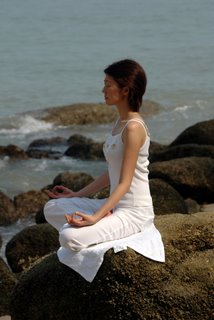 Meditation Some people find the quiet rhythms of meditation just plain annoying. When they try to empty their minds, all they can do is think about the Visa bill that’s due, the kids’ next soccer game, the sneaking suspicion that they’re about to be broken up with. For folks like these, there’s another option. It’s called mindfulness meditation, also known as Vipassana, and according to researchers at the HealthEmotions Research Institute at the University of Wisconsin, it may bring just as many health benefits as more mainstream meditation. In Vipassana, you don’t exactly embrace your anxious thoughts, but you don’t have to push them out the door and move the dresser in front of it, either. Instead, you observe and appreciate the distracting thoughts for what they are: part of life, part of the moment. By not resisting, you can quiet your mental chatter for a time, gain some perspective, and continue to move toward a more relaxed state.
To test the effect of mindfulness meditation on overall health, the researchers assembled 25 members of a study group that was trained in the ancient practice by researcher Jon Kabat-Zinn, who tailored it as a remedy for stress back in the 1970s. Before starting to meditate, each person was given a flu shot to stimulate the immune system; that way re-searchers could compare their bodily responses pre- and post-meditation. Sixteen people who didn’t meditate were given flu shots and included for comparison. The change was dramatic: The study group developed a significantly larger army of flu antibodies than did the nonmeditators. Also, tests showed increased electrical activity in their frontal lobes, the part of the brain associated with happiness and other positive emotions. Next, the researchers plan to study a group that’s been meditating mindfully for 30 years. In the meantime, don’t let unwelcome thoughts keep you from giving this technique a try.
Although meditation can be done in almost any context, practitioners usually employ a quiet, tranquil space, a meditation cushion or bench, and some kind of timing device to time the meditation session. Ideally, the more these accoutrements can be integrated the better. Thus, it is conducive to a satisfying meditation practice to have a timer or clock that is tranquil and beautiful. Using a kitchen timer or beeper watch is less than ideal. And it was with these considerations in mind that we designed our digital Zen Alarm Clock and practice timer. This unique “Zen Clock” features a long-resonating acoustic chime that brings the meditation session to a gradual close, preserving the environment of stillness while also acting as an effective time signal.
adapted from Natural Solutions, May, 2003
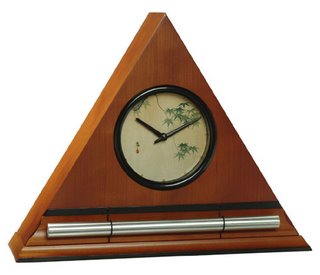 Meditation Timers with Chimes from Now & Zen Now & Zen’s Chime Timer for Meditation Store
1638 Pearl Street
Boulder, CO 80302
(800) 779-6383
Posted in Chime Alarm Clocks, Meditation Timers, Meditation Tools, mindfulness practice, Now & Zen Alarm Clocks, Well-being
 How to Improve Your Brain - Use Your Meditation Timer Want to build a better brain? Ramp up your spiritual practice, says Andrew Newberg, a neuroscientist at the University of Pennsylvania. Meditation and prayer can improve your physical, intellectual, and emotional well-being and may even slow the brain’s aging process.
Newberg, who is also the director of the Center for Spirituality and the Mind, is the author of four books, including the recently released “How God Changes Your Brain,” which discusses the results of brain scans that he and his team conducted on more than 100 meditating or praying people. The research shows that the physical and emotional benefits of spiritual observances dramatically accrue over years of practice, but even recent converts exhibit healthier brains — in one study Newburg’s team scanned the brains of people who had never meditated before, then taught them simple meditative methods. After eight weeks of meditating 12 minutes a day, an evaluation showed considerable improvement in memory scores and a measurable decrease in anxiety and anger.
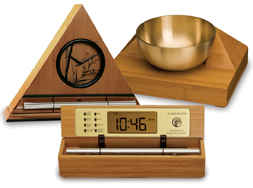 Chime Timers and Meditation Clocks adapted from SFGate.com by David Ian Miller, 4/2009
Using a kitchen timer or beeper watch is less than ideal. And it was with these considerations in mind that we designed our digital Zen Alarm Clock and practice timer. This unique “Zen Clock” features a long-resonating acoustic chime that brings the meditation session to a gradual close, preserving the environment of stillness while also acting as an effective time signal.
Now & Zen’s Meditation Chime Clocks & Timers
1638 Pearl Street
Boulder, CO 80302
(800) 779-6383
Posted in Bamboo Chime Clocks
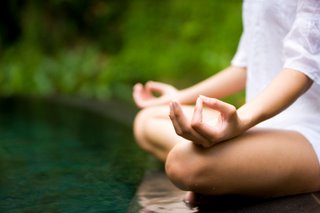 Meditation Produces Big Changes in Your Brain The benefits of meditation can’t be called new. For decades the practice has been endorsed, even by mainstream medicine, as a proven means to reduce stress and produce relaxation. In fact, if it were not for “the relaxation response,” a sanitized version of Eastern meditation that was popularized thirty years ago, it is doubtful that a secular society could be persuaded that meditation is real. Until recently, code words like “peacefulness” and “serenity” went about as far as anyone could go without seeming to bring religion in through the back door.
Now a new study from Massachusetts General Hospital has made headlines by showing that as little as eight weeks of meditation produces changes in various areas of the brain associated, not simply with feeling calmer, but with improved sense of self, empathy, and memory. Again this isn’t exactly new. Since the Seventies a change in brain waves, particularly alpha waves, was associated with the regular practice of meditation. Today, with far more sophisticated brain imaging, researchers can pinpoint where these changes are taking place with remarkable precision.
The short period of time needed to produce benefits surprised everyone. Brain scans of Buddhist monks had already shown dramatic alteration of gamma waves in the prefrontal cortex, a region associated with higher cognitive responses as well as moral feelings like compassion. But learning that a life-long meditator produced gamma waves at 80 cycles per second instead of the usual 40, although fascinating to neuroscientists, still kept meditation far out of reach of busy, secular Westerners. Now we can say, without fear of seeming “too Eastern,” that meditation sharpens the mind and produces benefits everyone would want. The old bugaboo that navel gazing makes you passive and “too peaceful” can be banished once and for all.
If you back away and look at the bigger picture, what you see is startling. There is a direct path that begins in the mind — with meditation, mindfulness, or more basic things like beliefs and emotions — and then the path leads to the genes, where signals are sent that modify the brain cell, which in turn sends its own signals in the form of neurotransmitters to every cell in the body. The reason that eight weeks is enough to cause significant changes in the brain is that the underlying circuitry that connects mind, genes, and brain operates every second of our lives. Ultimately, I’m confident that the results will spread even farther. We will discover that a person’s awareness balances and controls almost any bodily process you can name. The old phrase, “biology is destiny,” will have to be seriously re-examined. A good replacement would be “consciousness is destiny,” which is the guiding reason that meditation arose in the first place. I foresee enormous opportunities for personal freedom here. Instead of being dictated to by your genes and chemical processes in the brain, it may turn out that you are the author of your own life, capable of change, healing, creativity, and personal transformation. Who wouldn’t want to be free to write the program that runs brain and body? Such has been the spiritual promise for thousands of years. It’s time that modern society woke up and realized that the promise still holds good.
 Meditation Timer with Soothing Chime Although meditation can be done in almost any context, practitioners usually employ a quiet, tranquil space, a meditation cushion or bench, and some kind of timing device to time the meditation session. Ideally, the more these accoutrements can be integrated the better. Thus, it is conducive to a satisfying meditation practice to have a timer or clock that is tranquil and beautiful. Using a kitchen timer or beeper watch is less than ideal. And it was with these considerations in mind that we designed our digital Zen Alarm Clock and practice timer. This unique “Zen Clock” features a long-resonating acoustic chime that brings the meditation session to a gradual close, preserving the environment of stillness while also acting as an effective time signal. The Digital Zen Clock can be programmed to chime at the end of the meditation session or periodically throughout the session as a kind of sonic yantra. The beauty and functionality of the Zen Clock/Timer makes it a meditation tool that can actually help you “make time” for meditation in your life.
adapted from San Francisco Chronicle by Deepak Chopra – the author of over 60 books on health, success, relationships and spirituality, including “The Soul of Leadership.” Feb. 2011
 Now & Zen's Family of Chime Timers and Alarm Clocks Now & Zen’s Chime Timer Store
1638 Pearl Street
Boulder, CO 80302
(800) 779-6383
Posted in Uncategorized
 Cherry blossoms Researchers recently found that minutes-long meditation increases blood flow to the region of the brain that’s linked to learning and memory. In the morning, meditate for ten to 12 minutes before your cup of coffee or tea. (Caffeine can slow blood circulation to the brain.) Sit comfortably, let your eyes close and focus on your breath. If your thoughts start to wander, bring your attention back to your breath.
adpated from Natural Healing Magazine, November 2008
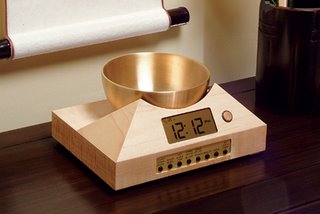 Zen Timepiece, a brass singing bowl clock and timer Now & Zen’s – The Zen Clock & Meditation Timer Sore
1638 Pearl Street
Boulder, CO 80302
(800) 779-6383
Posted in Bamboo Chime Clocks, Chime Alarm Clocks, intention, Meditation Timers, Meditation Tools, Now & Zen Alarm Clocks, Well-being, Yoga Timer, Yoga Timers by Now & Zen
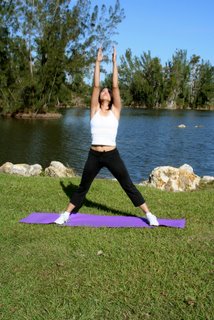 Yoga Moutain Pose Grounding, Balance
Finding balance in the midst of challenge is exactly what we try to achieve in our daily lives — and the practice of yoga is one that seeks to help us do it. One of the first things people notice when they bring their yoga practice outside, says Van Otten, is that unlike the flat surfaces we’re used to, the earth’s naturally uneven terrain presents its own challenge. You have to become more tuned in to where you’re putting your feet, with an eye out for rocks, tree roots, divots, and inclines. This constant conversation between mind and body keeps you mentally as well as physically engaged.
Earth Exercise
1. Begin in Mountain pose, bringing hands into prayer position.
2. Visualize breathing in the energy around you and breathing out love. The idea is not just to discard tension and anxiety but also to build reciprocal energy between you and your surroundings.
3. Reach your arms as high as you can, with heels planted and feet flat. Next, try reaching higher on the right side, then the left, three times on each side.
4. Round down into a forward fold. Hold this pose for five breaths with soft knees, hands flat on the ground.
5. Bend your legs a little, lowering your pelvis. Exhale as the knees bend; inhale and straighten. Do this three times.
6. Roll up slowly.
7. Stretch arms wide, then clasp your hands behind your back. Separate your feet to shoulder-width.
With a gentle backward bend, look up at the sky, drawing in solar, lunar, and stellar energy. Hold this pose for several breaths, then slowly return to Mountain pose.
To Experience the Earth
Practice barefoot. Do yoga on the grass; sense its coolness against your feet and palms. Imagine that the centers of your feet are over an energy spout — draw the energy up from the earth’s core, then let it flow out through the top of your head.
adapted from Wholeliving Magazine, July/August 2005 by Terri Trespicio
Use our unique “Zen Clock” which functions as a Yoga Timer. It features a long-resonating acoustic chime that brings your meditation or yoga session to a gradual close, preserving the environment of stillness while also acting as an effective time signal. Our Yoga Timer & Clock can be programmed to chime at the end of the meditation or yoga session or periodically throughout the session as a kind of sonic yantra. The beauty and functionality of the Zen Clock/Timer makes it a meditation tool that can actually help you “make time” for meditation in your life. Bring yourself back to balance.
 Digital Yoga Timer in Solid Walnut Now & Zen – The Yoga Timer Store
1638 Pearl Street
Boulder, CO 80302
(800) 779-6383
Posted in yoga, Yoga Timer, Yoga Timers by Now & Zen
 meditation reduces stress Dhyana heyah tad vrttayah.
Meditation removes disturbances of the mind. (Yoga Sutra II.11)
Research also shows that meditation can help people with anxiety disorders. Philippe Goldin, director of the Clinically Applied Affective Neuroscience project in the Department of Psychology at Stanford University, uses mindfulness meditation in his studies. The general practice is to become aware of the present moment—by paying attention to sounds, your breath, sensations in your body, or thoughts or feelings—and to observe without judgment and without trying to change what you notice.
Like most of us, the participants in Goldin’s studies suffer from all sorts of disturbances of the mind—worries, self-doubt, stress, and even panic. But people with anxiety disorders feel unable to escape from such thoughts and emotions, and find their lives overtaken by them. Goldin’s research shows that mindfulness meditation offers freedom for people with anxiety, in part by changing the way the brain responds to negative thoughts.
In his studies, participants take an eight-week mindfulness-based course in stress reduction. They meet once weekly for a class and practice on their own for up to an hour a day. The training includes mindfulness meditation, walking meditation, gentle yoga, and relaxation with body awareness as well as discussions about mindfulness in everyday life.
Before and after the intervention, participants have their brains scanned inside an fMRI (or functional MRI) machine, which looks at brain activity rather than the structure of the brain, while completing what Goldin calls “self-referential processing”—that is, thinking about themselves. An fMRI scanner tracks which brain areas consume more energy during meditation and, therefore, which regions are more active.
Ironically, the brain-scanning sessions could provoke anxiety even in the calmest of people. Participants must lie immobilized on their back with their head held in the brain scanner. They rest their teeth on dental wax to prevent any head movement or talking. They are then asked to reflect on different statements about themselves that appear on a screen in front of their face. Some of the statements are positive, but many of them are not, such as “I’m not OK the way I am,” or “Something’s wrong with me.” These are exactly the kinds of thoughts that plague people with anxiety.
The brain scans in Goldin’s studies show a surprising pattern. After the mindfulness intervention, participants have greater activity in a brain network associated with processing information when they reflect on negative self-statements. In other words, they pay more attention to the negative statements than they did before the intervention. And yet, they also show decreased activation in the amygdala—a region associated with stress and anxiety. Most important, the participants suffered less. “They reported less anxiety and worrying,” Goldin says. “They put themselves down less, and their self-esteem improved.”
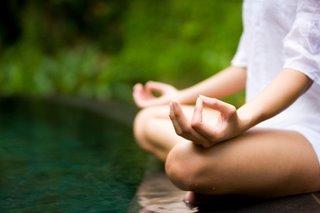 reduce stress with meditation Goldin’s interpretation of the findings is that mindfulness meditation teaches people with anxiety how to handle distressing thoughts and emotions without being overpowered by them. Most people either push away unpleasant thoughts or obsess over them—both of which give anxiety more power. “The goal of meditation is not to get rid of thoughts or emotions. The goal is to become more aware of your thoughts and emotions and learn how to move through them without getting stuck.” The brain scans suggest that the anxiety sufferers were learning to witness negative thoughts without going into a full-blown anxiety response. Research from other laboratories is confirming that mindfulness meditation can lead to lasting positive changes in the brain. For example, a recent study by Massachusetts General -Hospital and Harvard University put 26 highly stressed adults through an eight-week mindfulness-based course in stress reduction that followed the same basic format as Goldin’s study. Brain scans were taken before and after the intervention, along with participants’ own reports of stress. The participants who reported decreased stress also showed decreases in gray -matter density in the amygdala. Previous research had revealed that trauma and chronic stress can enlarge the amygdala and make it more reactive and more connected to other areas of the brain, leading to greater stress and anxiety. This study is one of the first documented cases showing change ocurring in the opposite direction—with the brain instead becoming less reactive and more resilient.
Together, these studies provide exciting evidence that small doses of mental training, such as an eight-week mindfulness course, can create important changes in one’s mental well-being.
adapted from Yoga Journal, by Kelly McGonigal
 Bamboo Digital Zen Alarm Clock by Now & Zen Now & Zen’s Meditation Timer Store
1638 Pearl Street
Boulder, CO 80302
(800) 779-6383
Posted in Bamboo Chime Clocks, intention, Meditation Timers, Meditation Tools, mindfulness practice, Now & Zen Alarm Clocks, Well-being, Zen Timers
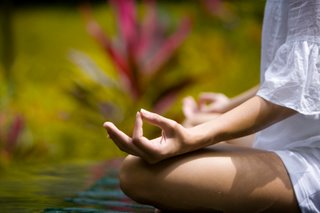 outdoor yoga routine Sometimes it’s hard to see that yoga is far more than a physical activity confined by time, space, and a mat. Too often we rush to class to secure a spot on the studio floor and begin our practice without taking note of our surroundings. We may compare our poses with those of others; we can get distracted by people wandering in and out of class or maneuvering for elbow room.
By getting out of the studio and into nature, you can experience yoga as it was originally intended. “Being outdoors gives you access to a whole other world of sensations. It helps you feel part of a boundless existence, at one with an intelligent and sympathetic universe,” says Garrett Sarley Dinabandhu, president of the Kripalu Center for Yoga and Health in Massachusetts’s Berkshire Mountains. The pure unpredictability of being outside and exposed to the elements can strengthen an existing practice or inspire a new one, Dinabandhu says.
Working with Michelle Van Otten, owner of Ultimate Outdoor Fitness in Los Gatos, California, and E. Barrie Kavasch, an expert in Native American wisdom and author of “The Medicine Wheel Garden,” we’ve developed a unique yoga-based routine that’s meant to be an out-of-studio experience.
This Four Elements Ritual — Earth, Wind, Fire, and Water — is designed to awaken your senses, enhance your focus, and help you reconnect to the natural world.
Tips for Outdoor Practice
To refresh your experience when you go outside, keep these four points in mind.
Find Your Place of Peace and Power
Everybody has access to some spot of natural power. It doesn’t have to be the Grand Canyon; it can be Central Park, a river, a stream, a hillside. Maybe it’s a place made special by its juxtaposition to what’s around it — an old oak tree next to a housing development or a water fountain in the middle of a city. If you open yourself to it, you can find lots of what Dinabandhu calls “little doorways into the natural rhythms of nature.”
Be Present
To most people, the outdoors is a transitional place — something they rush through on their way from one indoor environment to another; they’re not fully conscious of the world itself. The rewards of being present in nature are very fulfilling — but it’s an awareness you have to cultivate.
Start with Your Breath
Do a few ujjayi breaths to relax and slow down. Breathe slowly through your nose, allowing your belly to expand; slightly contract the back of the throat as you inhale and exhale to create the audible sound of an ujjayi breath, like ocean waves rushing over pebbles. Listen for the gentle rhythms of nature and allow your breath to fall in sync with it. With each breath, reach your sensory awareness toward your inner self and out into the world around you.
Go Slow and Slower
When you practice yoga outside, it’s not about how many asanas you do, but the quality of movement that enriches your practice. Think of moving from the inside out, following your body’s natural inclination and rhythms. Feel the currents of the air across your body and let that direct you. Enjoy the flow of one pose into another. Take your time.
adapted from Whole Living Magazine, July/August 2005 by Terri Trespicio
Use our unique “Zen Clock” which functions as a Yoga Timer. It features a long-resonating acoustic chime that brings your meditation or yoga session to a gradual close, preserving the environment of stillness while also acting as an effective time signal. Our Yoga Timer & Clock can be programmed to chime at the end of the meditation or yoga session or periodically throughout the session as a kind of sonic yantra. The beauty and functionality of the Zen Clock/Timer makes it a meditation tool that can actually help you “make time” for meditation in your life. Bring yourself back to balance.
 Bamboo Zen Alarm Clock with Chime, yoga timers from Boulder, CO Now & Zen – The Yoga Timer Store
1638 Pearl Street
Boulder, CO 80302
(800) 779-6383
Posted in Chime Alarm Clocks, Japanese Inspired Zen Clocks, Well-being, yoga, Yoga Timer, Yoga Timers by Now & Zen
 Yellow Flowers. c. 1900, unknown Exhaustion Cause: Disconnection from Nature
It’s hard to feel tired or anxious while hiking in the wilderness or staring out at a blue expanse of ocean. “Nature has built-in mechanisms for relieving stress,” says Doreen Sweeting, M.D., founder of Psychosomatic Wellness Intuitive Life Coaching. “There’s aromatherapy in the scent of the pine trees and grass, chromatherapy in the colors of the rocks and sky and flowers, sound therapy in the birdsong and wind rustling the leaves.”
Our society, unfortunately, is increasingly cut off from this wellspring of energy. “We live in artificial light. We walk on concrete. We exercise on machines,” Sweeting says. “We go from home to work to the store and back home.”
Exhaustion Cure: Take a Morning Walk
Set your Zen Timepiece to remind you whether you live in a suburb or a bustling city, to take a walk first thing in the morning — if possible, in an area filled with trees. “You’ll feel the energy of nature replenishing you,” says Sweeting. “The tree huggers are on to something.” As often as possible, venture deeper into the woods by planning day hikes or overnight camping trips.
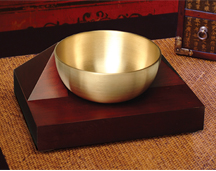 Signing Bowl Timers & Alarm Clocks Make an extra effort to notice the changing seasons. “You’ll start to realize the rhythms of nature apply to you, too,” Sweeting concludes. “When you harmonize yourself with nature, you’ll develop a stronger sense of well-being. The body responds quickly to being honored in this way. And it can all start with getting out to the park.”
adapted from Body+ Soul Magazine, September 2009
 Zen Chime Alarm Clock, Digital Black Lacquer Chime Clock Now & Zen’s Singing Bowl Clocks & Timers
1638 Pearl Street
Boulder, CO 80302
(800) 779-6383
Posted in Bamboo Chime Clocks
 yoga supported fish pose Beat the Blues
You can see next week’s deadlines and responsibilities building up like a wave about to crest.
Take a few moments of silence to coil your energy before you dive into another week. This pose helps ward off the Monday-morning blues, inviting energy into your body and mind.
Supported Fish
What It Does
Stretches the shoulders, neck, and chest; improves posture and deepens breathing, countering a forward hunch. Opens the heart and the throat chakras, bolstering courage and encouraging authentic expression.
How to Do It
Set your Zen Yoga Timer in Bamboo to chime after 5 minutes. Roll up a thin blanket and lie on your back, resting your shoulder blades on the blanket. If your head doesn’t comfortably reach the floor, place another blanket or small pillow underneath.
Let your breath rise and fall naturally, and stay here for 5 minutes, or as long as you like.
adatped from Body + Soul, 2010
 Bamboo Digital Chime Clock, a calming timer and alarm clock made from natural materials like bamboo, walnut, and maple Now & Zen’s Yoga Timer Store
1638 Pearl Street
Boulder, CO 80302
(800) 779-6383
Posted in Bamboo Chime Clocks, Japanese Inspired Zen Clocks, Meditation Timers, Meditation Tools, Now & Zen Alarm Clocks, Yoga Timer, Yoga Timers by Now & Zen
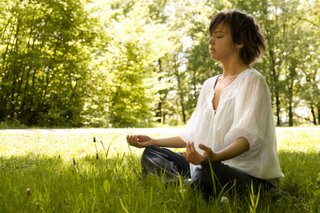 lovingkindness meditation Put it into practice.
Sit comfortably in a place where you won’t be disturbed. Take three to five quiet breaths. Gently close your eyes.
Imagine the horizon spanning through your chest with a radiant sun rising in your innermost center—your heart. As though being melted by the solar warmth, release tension in your shoulders and across your throat. Soften your forehead and rest your attention inward on the light deep within. Take 7 to 10 smooth, even breaths.
As you inhale, invite the glow from your heart to expand toward the inner surface of the body. With each exhale, let the light recede. Take another 7 to 10 peaceful breaths. Inhaling, invite the light to touch the parts of you that interact with the world—your eyes and ears, the voice center in your throat, the palms
of your hands, the soles of your feet. Exhaling, feel your light shine more clearly. As you continue to inhale and exhale, silently say: “I radiate friendliness for those who are happy, com-passion for those who are unhappy, equanimity toward all.” Continue until your attention wavers. Then, sit quietly for several minutes.
When you feel complete, place your palms together in front of your heart and bow your head. Release the backs of your hands to your thighs and lift your head. Gently open your eyes to return to the horizon of the world.
adapted from Yoga Journal, byKelly McGonigal
Use our unique “Zen Clock” which functions as a Yoga Timer. It features a long-resonating acoustic chime that brings your meditation or yoga session to a gradual close, preserving the environment of stillness while also acting as an effective time signal. Our Yoga Timer & Clock can be programmed to chime at the end of the meditation or yoga session or periodically throughout the session as a kind of sonic yantra. The beauty and functionality of the Zen Clock/Timer makes it a meditation tool that can actually help you “make time” for meditation in your life. Bring yourself back to balance.
 bamboo meditation timer Now & Zen – The Portable Meditation Timer Store
1638 Pearl Street
Boulder, CO 80302
(800) 779-6383
Posted in Bamboo Chime Clocks, intention, Meditation Timers, Meditation Tools, mindfulness practice, Now & Zen Alarm Clocks, Well-being, Zen Timepiece by Now & Zen, Zen Timers
|
|
|
|